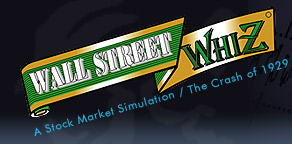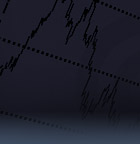
In the beginning of 1929, there was the strongest probability that the stock market bonanza that existed for the past several years would soon end. Stock prices rose unabated for several years, requiring immediate action to defuse what would become the collapse of the stock market. The choice ranged from an engineered collapse which could be controlled, to a more serious collapse later. The continued growth of the market for any amount of time was considered beneficial and interference would be viewed as an invasion - whether it came from the President of the United States, Secretary of the Treasury, Federal Reserve Board, or the Governor and Directors of the Federal Reserve Bank of New York. The year 1929 also brought about a change in the White House. President Coolidge, as he departed, stated that conditions were sound and stocks were "cheap at current prices" yet had earlier warned that speculation was a problem.
The Federal Reserve System, tasked to regulate the market, did so not by a firm hand, but rather by encouragement and restraint. This was done through suggestion, movement of interest rates, buying and selling securities, etc. The Federal Reserve Board which guided the twelve Federal Reserve Banks was considered by many to be incompetent. The tools used by the Federal Reserve System to control the market were open market operations and the manipulation of the discount rate. The Federal Reserve Board needed the power to fix margin requirements to effectively control speculation. This was obtained with the Securities Exchange Act of 1934 to prevent furture reoccurences of over speculation.
In 1927, the New York Federal Reserve Bank, under the guidance of Benjamin Strong, eased the money rates to help hard-pressed Europeans - a reasonable move considering their troubled circumstance. This was considered a major factor contributing to the increase in speculation that followed. It was also considered that many who made decisions regarding the curbing of speculation were heavily involved themselves in speculation. In the first half of 1928 there was significant sales of securities by the Federal Reserve to reduce the supply of funds that was feeding the market. This was discontinued later in the year partly in concern for its effect on "legitimate" business. The Reserve Banks continued to buy acceptances which it used to finance ordinary non-speculative trade, allowing commercial banks to loan more money in the stock market. The discount rate, which is the rate member commercial banks borrow from reserve banks to supplement their loan capability, was kept low, encouraging banks to borrow more. On February 14, 1929, the New York Federal Reserve Bank proposed the discount rate to be raised from 5 percent to 6 percent to reduce speculation.
During 1929, the Call Market was being flooded with funds from several corporations. In early 1929, loans from non-banking sources equaled and later surpassed, loans from banks. On February 2, 1929, the Reserve Board, recognizing Broker's loans had gone too high issued a statement to individual Reserve banks regarding their position on speculative loans and insisted that Federal Reserve credit not be used for speculative purposes. On February 7, 1929, another statement, this time warning the public, was released by the board stating their concern for their ability to accommodate normal commerce and business activities. This resulted in an immediate break in the market. This action had only a temporary effect which reversed itself in early March.
In the closing days of March, the Federal Reserve Board had daily meetings in Washington. No reason was given for the meetings and no statements were issued at the conclusion of each meeting. The market became unsettled as a result, but continued its course until March 25, 1929. On March 23, 1929, an unprecedented Saturday meeting was held. On Monday, the mystery was too much for the market to bear. Investors began to sell, and loans in the Call Market dropped significantly. On Tuesday, March 26, 1929, the trend intensified and the rate on call money went to 20 percent. Charles E. Mitchell, Director of the New York Federal Reserve Bank, stepped in to instill stability to the market. By the end of the day, the market rallied. Mr. Mitchell's action flew in the face of the Federal Reserve Board which from that point on took a detached attitude to regulating the market. Now, free from government intervention, the market went virtually unrestrained. |




